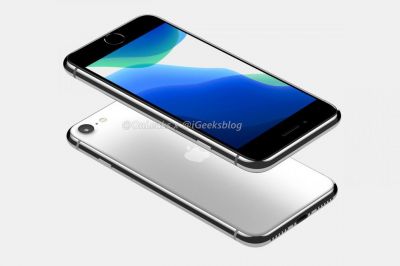

Apple has been playing the waiting game with fans of the iPhone SE for almost two years. Rumors of an affordable iPhone that would succeed the iPhone SE have been flooding the internet since early 2019. However, Apple didn't have any plans for an iPhone SE 2 last year, but now it seems that the company will finally launch the iPhone SE 2 aka the iPhone 9.
iPhone SE 2 production to begin in February
A Bloomberg report suggests Apple suppliers are planning to begin assembly of a new low-cost iPhone in February as Apple seems to have finally understood the need for an affordable iPhone to lure a wider set of buyers in order to capture a larger share of the global smartphone market ahead of its iPhone 12 5G handsets launch later this year. The source also claims that Apple will split the assembly work among its suppliers Hon Hai Precision (Foxconn), Pegatron, and Wistron.
The information seems plausible because it comes from industry sources close to Apple suppliers and coincides with the purported launch timeline of the new iPhone. Apple has been long rumored to announce the iPhone SE 2 aka iPhone 9 as early as March, and sources familiar with Apple's launch roadmap corroborate the claim.
iPhone SE 2 or iPhone 9?
The new iPhone handset is said to be the first low-cost iPhone since the iPhone SE and hence people are touting it to be the successor to the iPhone SE - the iPhone SE 2. However, there are also reports that the new iPhone may be called the iPhone 9 because of its similarities with the iPhone 8.
The handset will reportedly look quite similar to the iPhone 8 which was launched in 2017, and will sport a 4.7-inch LED-backlit LCD screen, according to a Bloomberg report. The iPhone SE2/iPhone 9 is also said to come with Touch ID, just like the iPhone 8.
The iPhone 8 is still being sold for around $449, but the upcoming iPhone could launch at an even cheaper price, probably around $399. Apple had priced the iPhone SE $399 when the handset was launched back in 2016, therefore the reason for the iPhone SE 2 moniker.
Practicality over novelty
Although the new iPhone is rumored to employ a smaller screen and Touch ID when Android smartphone makers are shifting to more modern displays with upwards of 90 percent screen-to-body ratio and in-display fingerprint sensors, it still makes good sense especially considering that it will be featuring the same A13 SoC that powers the current iPhone 11 series.
There have also been rumors of a bigger iPhone SE 2 Plus/iPhone 9 Plus that could launch with a bigger display and FaceID authentication, but that is still in the realm of probability.
Apple's foot soldiers
In the past, Apple's more affordable iPhones such as the iPhone SE, the iPhone XR and now the iPhone 11, have all proved to be popular with consumers who are looking for uncompromised performance and quality at a cheaper price.
A cheaper iPhone will also help Apple to better compete with low-cost Android smartphones from Chinese manufacturers who seem to have dominated price-sensitive markets such as India, and capture a decent piece of the pie in the second largest smartphone market in the world.
Would you buy a cheaper iPhone over an Android flagship?
The iPhone SE 2's expected launch price of $399, if it turns out to be correct, will make it a very compelling option despite its limitations. The $399 price tag is a full $200 less than the price of its nearest competition the OnePlus 7T which retails for about $599. Even though the cheapest OnePlus phone in the current line-up has a bigger and better display, in-display fingerprint sensor, a triple camera set-up, which the new iPhone most likely won't have, it still won't match the processing prowess and ultimate benchmark scores of the A13 chip-powered iPhone.
But then again, it's a matter of personal choice. It all boils down to just a question of whether you want a modern looking Android flagship smartphone with a large full-screen display, and all the modern smartphone specs, or you want the most affordable iPhone.









